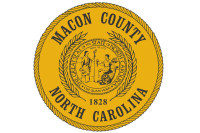Looking back at strawberry wine, Kephart and Calhoun
In a letter to the editor of the Smoky Mountain News published several weeks ago, Gwen Franks Breese took exception to a Back Then column of mine originally published in SMN in November 2013.
That column went into considerable detail as to Horace Kephart’s “condition” (in November 1904) at the time Granville Calhoun (her great-uncle) escorted the writer from Bushnell to an abandoned cabin on the Little Fork of the Sugar Fork of Hazel Creek.
The event has some significance in the life stories of two of the more prominent figures in this region’s cultural history. Because I am currently contracted (along with Janet McCue, former librarian of Cornell University) to write a biography of Kephart for the Great Smoky Mountains Association, I am obligated to examine, as best I can, each episode in Kephart’s life in the light of available evidence.
Since Mrs. Breese chose to focus upon some interesting family lore but failed to mention (even in passing) the materials I cited, I will go through it again.
A regional entrepreneur named Jack Coburn, who subsequently became a lifelong friend of both Calhoun and Kephart, obtained permission from a mining company that had gone into litigation for Kephart to live in one of its vacant cabins.
That remote site on “the Little Fork of the Sugar Fork of Hazel Creek” became from 1904 until 1907 the now well-known vantage point from which he studied the land and its people for parts of three years.
Related Items
Coburn arranged for a mountaineer named Granville Calhoun to meet Kephart at the depot at the mouth of Hazel Creek and lead him up to the cabin. Therein lies the context for one of the region’s most legendary encounters.
Granville and his wife, the former Lillie Hall, built a store at Medlin, which served as post office and unofficial community center. Granville and Lillie bought a two-story home downstream at Proctor in 1928 and eventually owned 17 other houses. With the coming of the park and the flooding of Lake Fontana in the mid-1940s, they had to move to Bryson City where their son, Seymour, operated a hotel.
When I visited Granville in early 1973, he was going on 100 and communicated with visitors via Seymour’s assistance. Even so, sitting upright in a kitchen chair, he was still the man remembered by a contemporary as being “larger than life.”
In Strangers in High Places: The Story of the Great Smoky Mountains (1967), Michael Frome aptly described Granville as the “squire of Hazel Creek ... a man with a sparkle in his eye and flood of mountain stories rolling from his lips.” And the accounts Granville passed along to regional columnists like Carson Brewer of the Knoxville News-Sentinal about an incapacitated greenhorn named Horace Kephart have all the earmarks of a tall tale spun by Mark Twain. The tale varied somewhat from listener to listener.
In a chapter devoted to Kephart, Frome reported after interviewing Granville that Kephart — “transfixed as with some distant image” — held onto a mule “as best he could” for 16 miles. Arriving at Granville’s home, he was undressed, put to bed and offered milk. Kephart declined that beverage in favor of “Smoky Mountain strawberry wine,” which Frome was assured “is reputed to awaken the dead and delight the angels.” Thereafter the patient was restricted to “sweet milk.”
And “so it went for three weeks, Granville spoon-feeding Kephart, first milk, then bread and butter and fish from the stream, while Kephart arose very slowly from his torpor and tremens, the long hangover, the flight away from himself and the world he knew before.”
In Carson Brewer’s version, Valley So Wild: A Folk History (1975), Granville recalled, 70 or so years after the fact, that the strawberry wine was “a pale red wine and you could smell it all over the room when I took out the stopper.”
I noted almost 40 years ago in the introduction to the University of Tennessee’s 1976 reissue of Our Southern Highlanders that Frome’s “presentation conflicts with available sources.” Neither Frome nor by extension his informant, indicated much, if any, awareness that Kephart was not coming directly from St. Louis to Hazel Creek.
In an “Afterword” to the published version of Gary Carden’s play “Outlander,” in which Granville and Horace are the major protagonists, I considered the matter again in greater detail, as follows:
Kephart kept a diary following his departure for the Smokies. The two volumes are presumably “lost,” but being an inveterate library cataloger he created an “Index to Diary” that has been preserved in Journal 1 of the 27 journals archived in Special Collections at Hunter Library at Western Carolina University.
On Nov. 1 under the heading “Off for Medlin,” he left the Dicks Creek camp near Sylva via train, making seven diary entries along the way to the Bushnell depot at the mouth of Hazel Creek. The eighth entry for that day is “Trip to Medlin” followed by diary notations having to do with “Ginseng,” “Buzzards and hog cholera,” “Holly, mistletoe, ‘ivy,” and “The Mail Rider.”
There is no indication of where he spent the night (probably at Medlin with the Calhouns), but a photograph of the cabin at the mine site is captioned by Kephart, “Lived here alone, Nov. 2, 1904, to Jan. 1906” and the diary entries for that day, under the heading “The Everett Mine,” include: “The Cabin”; “Prices of hauling”; “Ownership of Lands”; “The man whose eyes shine”; “Josh Calhoun and the burnt shoe;” “Ground hogs;” “Working on cabin;” and “Dearth of provisions.”
George Frizzell, curator of the Kephart materials at WCU, and Daniel S. Pierce, chairman of the Department of History at UNC-Asheville (and author of the well-regarded The Great Smokies: From Natural Habitat to National Park (2000) agree with my conclusion — based on currently available documentation — that there was evidently no three-week interval at that time of “torpor and tremens” and “spoon-feeding.”
As is well known, Kephart was a chronic alcoholic and remained so until the day of his death in 1931. He was a “binge drinker” who would have extended periods (weeks or even months) between alcoholic episodes. But all of the tangible evidence now available seems to indicate that he was apparently quite sober from Nov. 1, 1904, when he left Dillsboro, until he arrived at the cabin on the Little Fork of the Sugar Fork of Hazel Creek on Nov. 2, 1904. If additional evidence surfaces that indicates otherwise, that will be fine.
Granville Calhoun and Horace Kephart remained friends for almost 30 years, with Granville serving as one of Horace’s pallbearers in 1931.
Online Sources
• Web address for July 9, 2014, letter to the editor (Strawberry Wine and its Place in the Smokies) by Gwen Franks Breece: www.smokymountainnews.com/opinion/item/13699
• The Special Collections Department of Hunter Library at Western Carolina University contains all of Kephart’s 27 journals, an index for his “lost” diary, his library, an extensive photographic collection, maps and other personal items. Internet resources that feature Kephart materials include “Horace Kephart: Revealing an Enigma,” an online exhibit of his life and works maintained by WCU archivist George Frizzell: www.wcu.edu/library/DigitalCollections/Kephart. Therein, Kephart’s “Index to Diary” detailing his activities and observations from Nov. 1, 1904, at his camp site on Dick’s Creek near Dillsboro to the cabin near Medlin Non Hazel Creek in the Smokies: can be examined. The photo of Kephart standing in the doorway of his cabin inscribed “(Lived here alone, Nov. 2. 1904, to Jan. 2, 1906.)” can be examined in the online photo album...
George Ellison wrote the biographical introductions for the reissues of two Appalachian classics: Horace Kephart’s Our Southern Highlanders and James Mooney’s History, Myths, and Sacred Formulas of the Cherokees. Readers can contact him at P.O. Box 1262, Bryson City, N.C., 28713, or at This email address is being protected from spambots. You need JavaScript enabled to view it..













